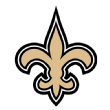It's a classic football precept: Great teams build up front. It's not quite true -- let's be honest, the best thing you can have is a good quarterback -- but good blocking is an important part of a strong NFL offense. The skill players get the headlines and the fantasy football numbers, but offensive linemen break open those big holes for your running backs and keep your quarterback upright so he can throw deep.
On the other hand, when the offensive line is bad, even the best quarterbacks and running backs can struggle to be effective. That has been a big problem for the two teams playing Thursday night, the Los Angeles Rams and Seattle Seahawks. The Rams' young blockers are so poor at opening running lanes that the team's talented running back, Todd Gurley, is averaging just 3.3 yards per carry. Seattle has struggled to protect Russell Wilson for years, which neutered the Seahawks' offense at midseason when an ankle injury cost Wilson his mobility.
NFL stats are imperfect, and offensive line metrics even more so. Rushing stats are distorted by long runs where the blocking didn't matter after the first few yards. Passing stats are distorted by the fact that some quarterbacks are simply more sack-prone than others. Nonetheless, we do have some metrics that will give us a good idea of which lines have done the most or least to help their teams this season.
To measure the best and worst lines of 2016, I averaged each team's rank in five categories:
1. Adjusted line yards (ALY): A Football Outsiders' metric that splits value between the blocking and the back based on the length of the run, adjusted for situation and opponent.
2. Stuffed rate: How often running backs are stuffed for a loss or no gain, the most blocking-dependent part of ALY.
3. Adjusted sack rate (ASR): Sacks (and intentional groundings) per pass play, adjusted for situation and opponent.
4. Pressure rate: How often the quarterback is under duress, including sacks and hurries, according to ESPN Stats & Information charting.
5. Penalties: per game by offensive linemen (including declined and offsetting).
Adjusted line yards were weighted at 150 percent, while penalties were weighted at just 50 percent. Further explanation of the first three categories, with updated numbers, can be found here.
There are a couple of big surprises from these metrics. One of the Thursday night teams doesn't rank near the bottom of the league. And even more surprising, Dallas does not rank at the top of the league. Of course, one set of numbers does not prove the Cowboys don't have the most productive line in the league. It does, however, suggest we're not doing enough to recognize the lines that rank ahead of them.
If you're curious about how all the teams stack up, I put a table ranking them from 1-32 after write-ups for the five best and worst offensive lines.
THE TOP FIVE

1. New Orleans Saints
The Saints are sixth in offensive DVOA, and the offensive line is a big reason why. It's a bit of a surprising performance from a group of players who aren't too well-known. Left tackle Terron Armstead has missed half the season with injuries, forcing 2015 first-round pick Andrus Peat to rotate between left tackle and left guard. Most observers thought veteran Jahri Evans looked over the hill when he couldn't make the Seattle roster in preseason, but he returned to the Saints and slotted right back into his old right guard spot. Right tackle Zach Strief has developed into a strong run-blocker but has yet to make a Pro Bowl. Center Max Unger, who came over from Seattle in the Jimmy Graham trade, completes the starting five.
The Saints are dead last in pressure allowed, according to ESPN Stats & Info charting, and they are fifth in adjusted sack rate. Sure, part of the reason the Saints do so well in pass-blocking metrics is that Drew Brees is so good at avoiding sacks and doesn't run into his own pressure. But that doesn't explain why the Saints lead the league in adjusted line yards, or why they've had runners stuffed for a loss or no gain only 14 percent of the time. New Orleans is even tied for the fewest number of penalties by offensive linemen (24).

